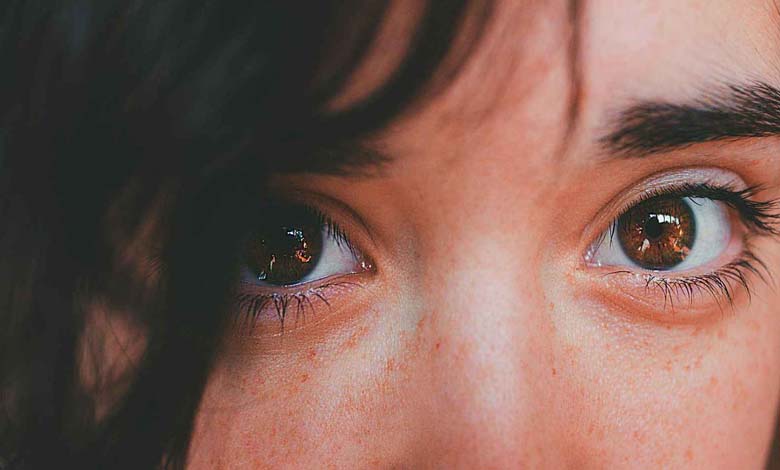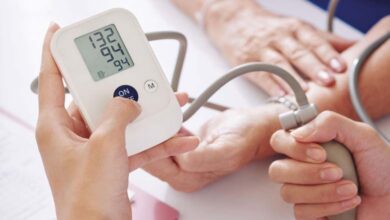High Cholesterol Symptoms May Appear in Just One Eye

Cholesterol is a fatty substance essential for various bodily functions, including hormone production, cell membrane structure, and vitamin D synthesis. However, an excess of LDL cholesterol (“bad cholesterol”) poses a major risk for cardiovascular diseases. What many people do not realize is that high cholesterol can sometimes manifest through symptoms in the eyes, and, in some cases, in just one eye.
-
Irritation and Infections: How Makeup and Contact Lenses Affect Your Eyes
-
A Simple Trick to Protect Your Eyes from Screen Fatigue
1. The link between cholesterol and eye health
When cholesterol levels are abnormally high, fatty deposits may form in the arteries, leading to atherosclerosis—a hardening or narrowing of the blood vessels. This can affect the tiny arteries that supply blood to the eyes. Because the eyes are highly vascularized organs, they are particularly sensitive to circulatory disturbances, and may reflect systemic health issues early on.
2. Ocular symptoms that may indicate high cholesterol
Some of the notable visual signs associated with elevated cholesterol include:
a. Corneal arcus (arcus senilis)
This is a grayish or white ring that forms around the cornea (the colored part of the eye). While common in older adults, its appearance in younger individuals may signal high cholesterol levels. It may initially appear in only one eye, making it easy to overlook.
b. Sudden vision loss in one eye
A retinal embolism—a blockage in the retina’s blood vessels caused by a cholesterol plaque or clot—can result in sudden, painless vision loss in one eye. This is a medical emergency and can be an early warning sign of an impending stroke.
-
The World on the Verge of Developing a Sighted Artificial Eye
-
One Cause is Dehydration… Reasons Behind Dark Circles Around the Eyes
c. Xanthelasma (fatty eyelid deposits)
These yellowish plaques, found on the upper or lower eyelids, are a visible indicator of lipid imbalance. They may develop asymmetrically, sometimes appearing on just one eyelid or eye area.
3. Why only one eye?
Unilateral symptoms often occur due to local differences in blood flow or vascular damage. One eye may have more vulnerable arteries or weaker circulation, making it more prone to early signs of damage. Nevertheless, symptoms in only one eye should not be underestimated, as they may be the first indicators of a broader systemic problem.
4. The importance of early screening
A basic blood lipid test can evaluate cholesterol levels, including total cholesterol, LDL, HDL, and triglycerides. If you experience unexplained vision changes—particularly if they occur in only one eye—it is vital to undergo both a lipid panel and a full eye examination. An ophthalmologist can assess the retinal vessels and detect signs of systemic disease through the eyes.
-
Your Eyebrow Shape Reveals 5 Health Indicators
-
The Eye: The Most Affected Organ by Rising Temperatures
5. Prevention and treatment strategies
If cholesterol levels are high, the following steps are recommended:
- Healthy diet: reduce intake of saturated fats and focus on fiber-rich, omega-3-rich foods.
- Regular physical activity: at least 30 minutes of moderate exercise daily.
- Quit smoking: tobacco damages blood vessels and worsens cholesterol effects.
- Medication: statins and other lipid-lowering drugs may be prescribed.
- Ongoing medical follow-up for those at high cardiovascular risk.
-
Iraq: Criminalization of Eye Color Change Procedures in Beauty Centers
-
Study: “Eye Problems” Linked to Early Symptoms of Dementia
The eyes are often called “the mirror of the body”, and in the case of high cholesterol, this is particularly true. What appears as a minor issue in one eye could be a warning signal of a much more serious underlying condition. Recognizing and responding to these signs—especially when unilateral—is crucial for early diagnosis and prevention of serious complications like stroke or heart attack. Protecting your eye health may, quite literally, save your life.












